If you have the chance, visit Peru. We have traveled to many countries, but Peru was a very special trip. The scenery is spectacular. The food is wonderful. The history is mind boggling.
We went to Peru in early December, 2018, with our dear Costa Rican friends, Maria and Alex. After an overnight in an airport hotel in Lima, we flew to Cusco, the ancient capital of the Incas. Upon arrival at the airport, we were met by our charming, enthusiastic guide, our driver and our yummy, huge box lunches. Cusco is considered the start of the Sacred Valley. Our destination was a town named Pisac. Cusco is almost 12,000 feet in elevation. Pisac is around 8,000 feet. For flatlanders from SW Florida, the effects of the high elevation were immediate. We had no energy. Every step took an effort. Fortunately our guide had a special tea for us to help with the elevation adjustment.
Our first stunning view of the Sacred Valley with the towering Andes. There is a river that runs the length of the valley which you can see as a tiny silver ribbon at the bottom of the right mountain. Our slightly funny faces stem from the fact our guide is having us say “cuy”, which is Quechua for guinea pig….more about this in the next post. Let’s just ease into this one.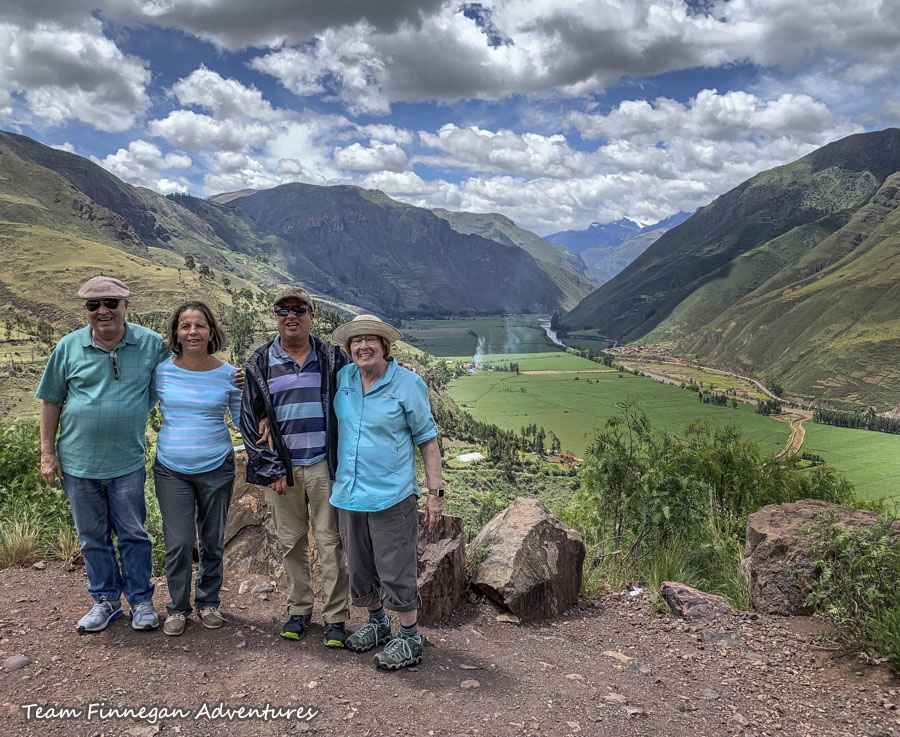
Evidently, we were not the only ones to be impressed with the Sacred Valley. It was settled hundreds of years before the Incas. Warmer and lower than Cusco, the Sacred Valley has been used for agriculture, grown on a sophisticated terrace system. The Incas settled the area around 1000 AD and developed agriculture there until the Spanish arrived.
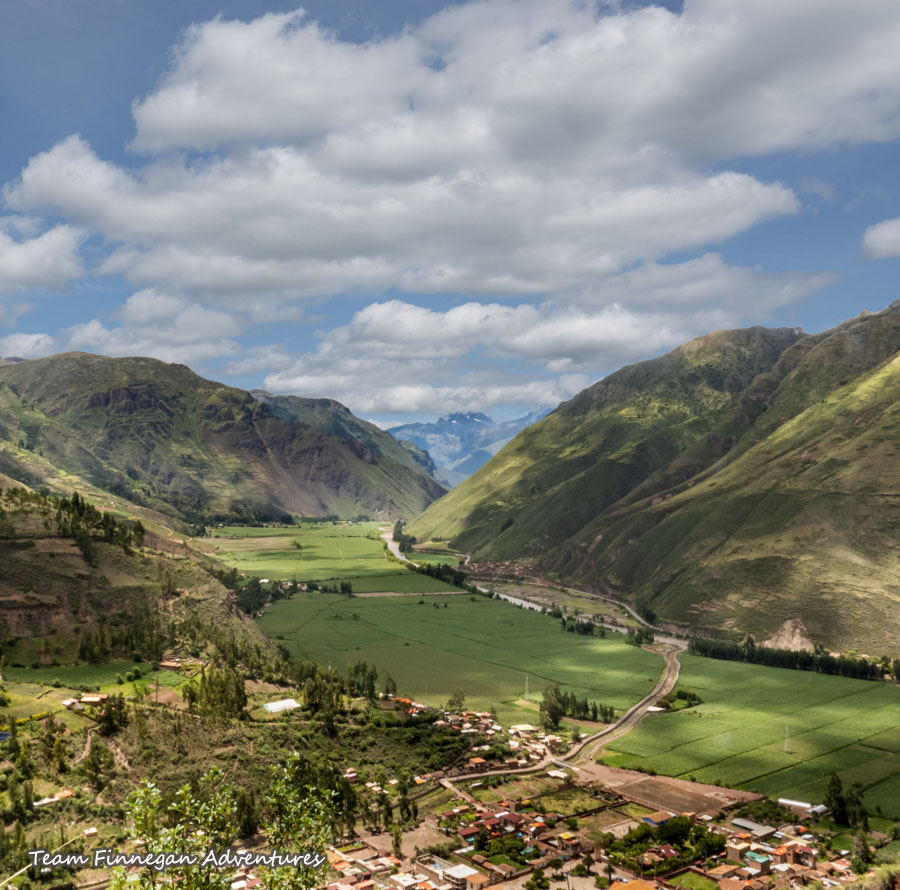
Pisac was a very important city for the Incas. Evidently the city was on an active trade route. It is also thought that Pisac was an important protection against an invasions of Cusco the capital of the Inca empire. The ruins include homes, religious buildings, and defensive structures. As you head up from the parking lot, this is your first introduction to the Pisac ruins. We were amazed by the magnificent Andes combined with the concept that hundreds of years ago, these relics were home to the Inca culture.
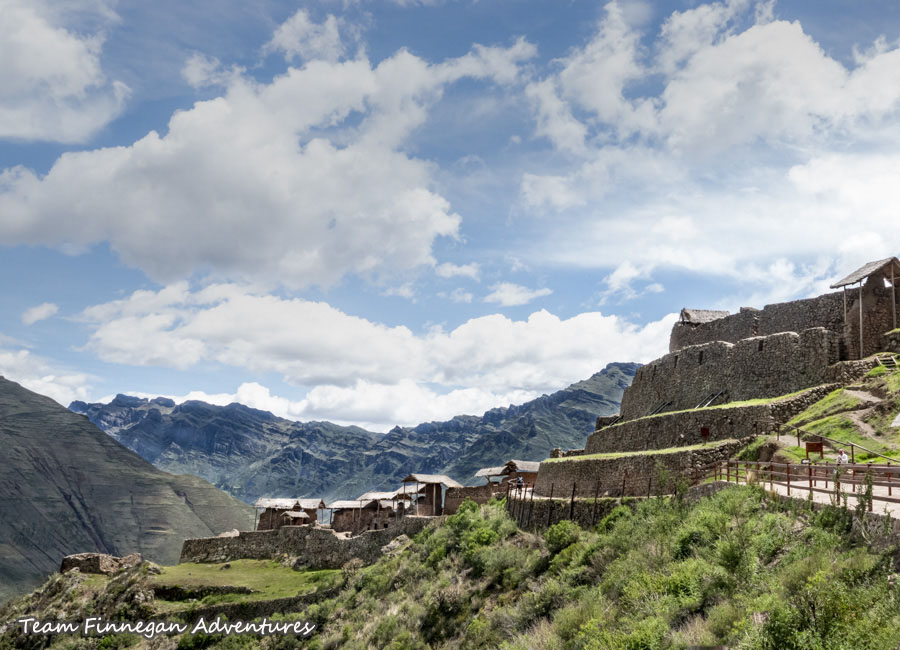
With our struggles with altitude, Robert was ready to take a relaxing break to listen to Andean music. Alex was extra pleased when our musician played his favorite, “El Condor Pasa”.
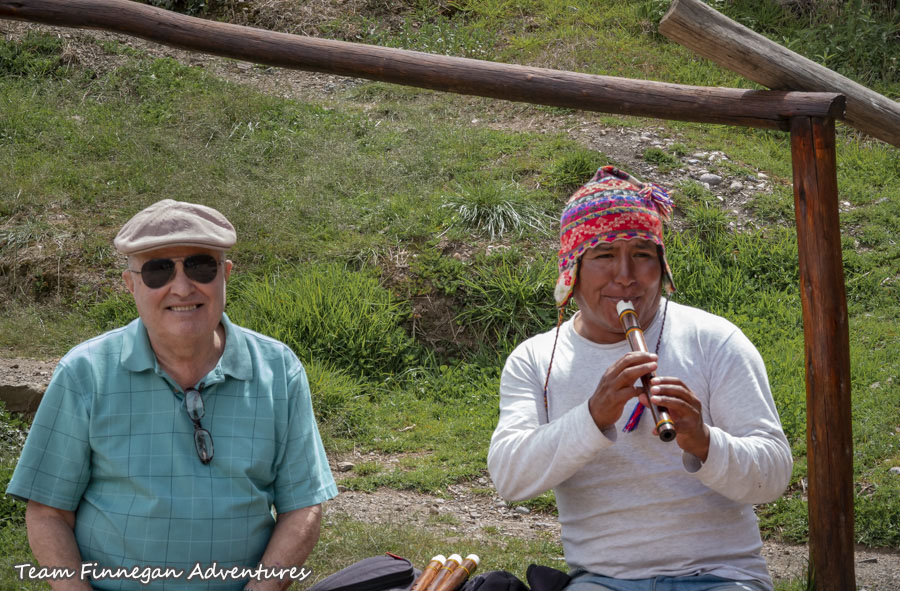
From the Pisac ruins, we looked down on a magnificent site with the Andes, the Sacred Valley and next to the ruins, the agricultural terraces. From everything that we were told by our guide and observed with our own eyes, Incan people were astonishing in their knowledge of the world and in their advanced engineering skills. They accomplished amazing engineering feats using rocks and the llamas.
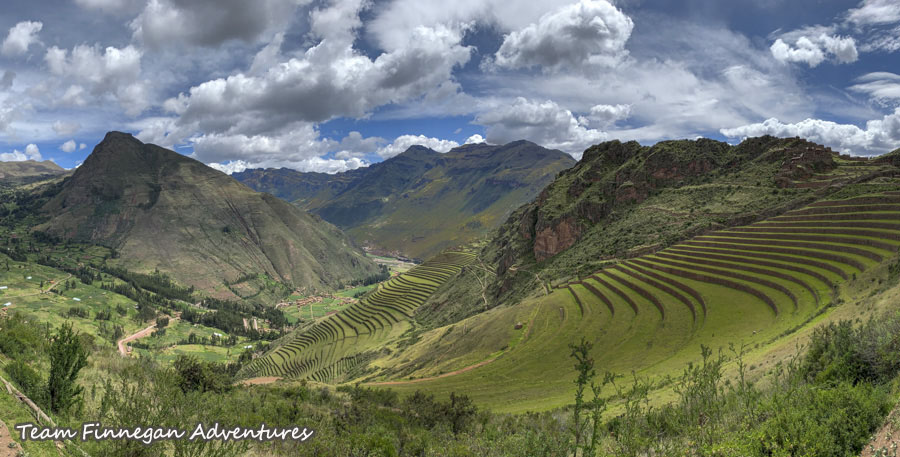
Here is a couple of closeups of the terraces right next to the start of the Pisac Ruins. In the bottom photo you can see the irrigation spouts for water at each terrace level. The water was unbelievably piped from the other side of the mountain.
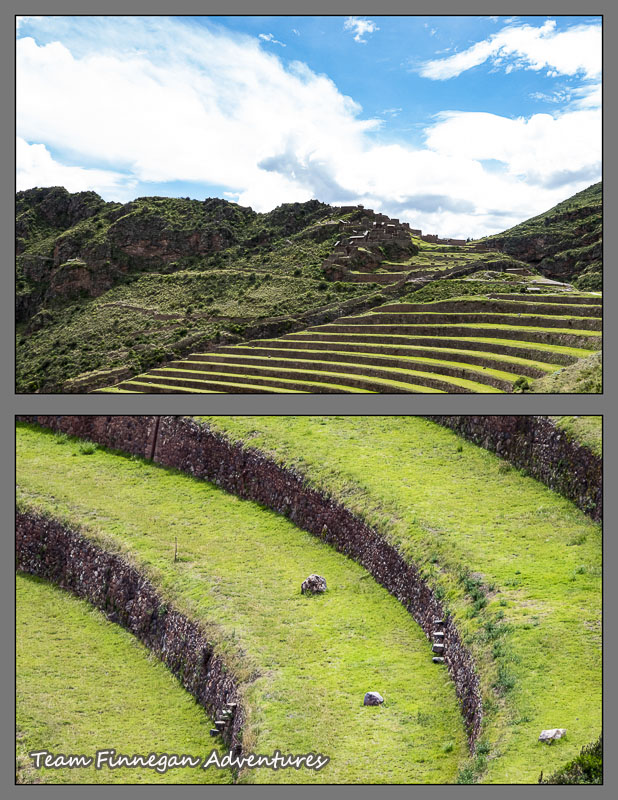
A couple of pictures of the Pisac Ruins.
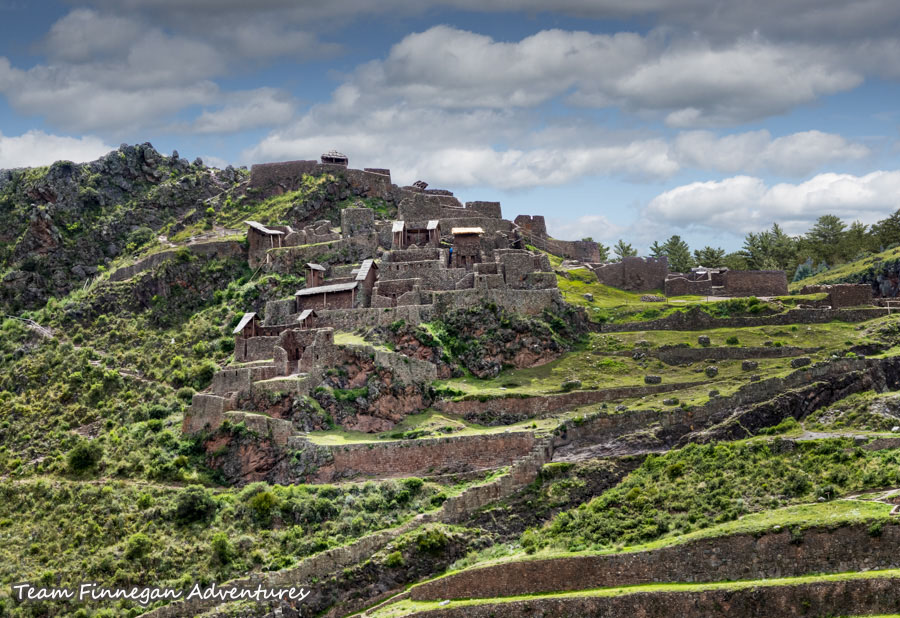
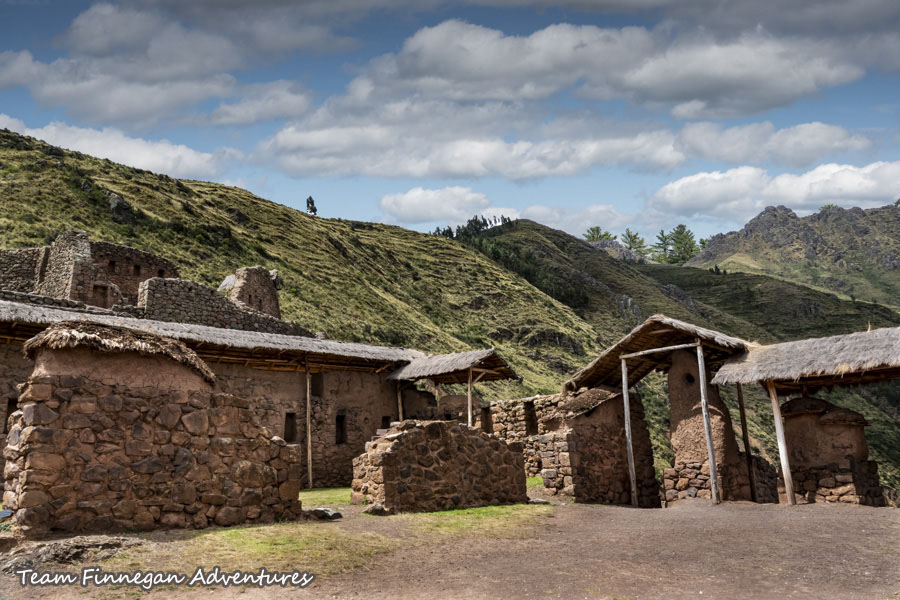
In the next post we visit a textile weaving operation, stop by a local market and share an interesting lunch.
